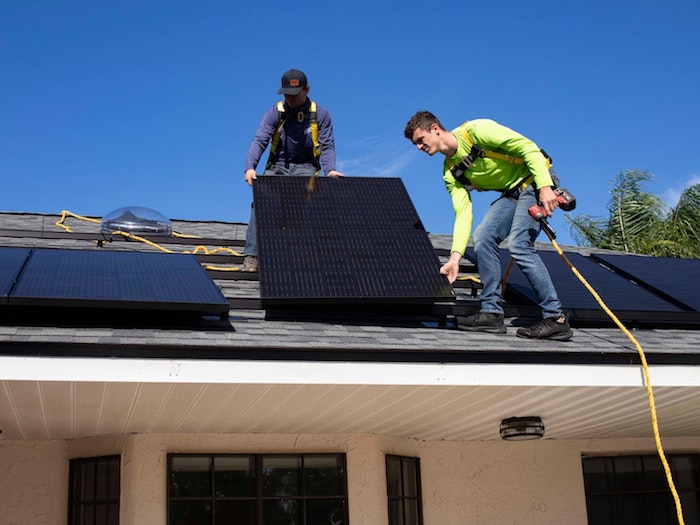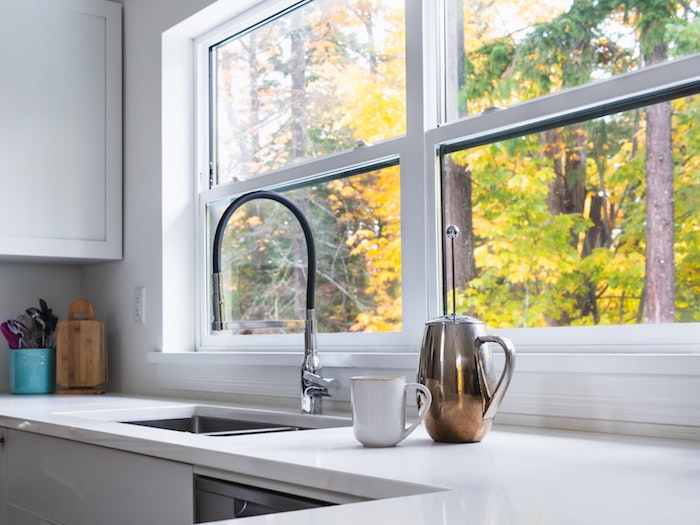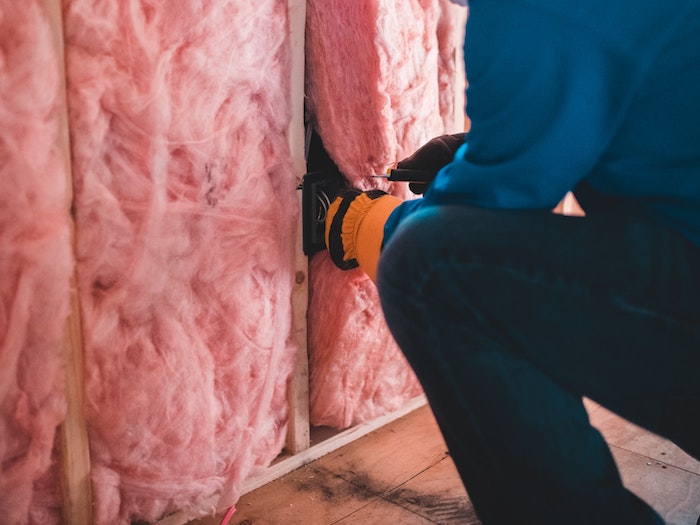By Courtney Lindwall, Natural Resources Defense Council
Here’s how to save on electric vehicles, solar panels, heat pumps, and more via tax credits and rebates
The Inflation Reduction Act directs an unprecedented $369 billion toward fighting climate change. As a result, we’ll all see innumerable long-term benefits, like reduced energy bills and health-care costs. But the most direct and immediate consumer-focused advantages come in the form of tax credits and rebates for buying emissions-reducing goods and services.
Here’s how to take advantage of Congress’s big climate moment.
Do some prep to make the most of these potential benefits
Start by considering a home energy audit. That means enlisting an expert to help determine your home’s energy efficiency pain points so that you can make the best use of these tax credits and rebates. (Good news: The Inflation Reduction Act offers a partial tax credit for this.) If you need help selecting a professional energy assessor, check out energy.gov. And remember to save your receipts and any other relevant records as you go so that you can either accurately account for the purchase when you file your taxes or apply for the rebates when they go live.
Educate yourself on how tax credits and rebates will roll out and what purchases qualify
Some tax credits are extensions of existing ones; others are new and will require implementation. Expect the rebates, which will likely offer either point-of-sale discounts or partial refunds to consumers, to take longer to go into effect. Thankfully, once these incentives kick in, most last at least a decade. Longer-lived incentives provide more market certainty for consumers, manufacturers, and even contractors who have to invest in training around new technologies.
The best part? If you were to take advantage of all of the Inflation Reduction Act’s tax credits and rebates, you could get back more than $10,000. The caveat is that it’s unlikely you’d qualify for all the credits and rebates at once. So as you consider the following options, note that there is some overlap in what qualifies, and pace yourself.

Solarize your roof or update other home renewable energy options
Though the price of rooftop solar has dropped more than 70 percent in the last decade, it still costs about $20,000 on average to install. Encouragingly, an expansion of a soon-to-expire solar tax credit will help make this more affordable for more people and shorten the time it takes for families to see a return on their up-front investment.
- What the Residential Clean Energy [Tax] Credit covers: You’ll get 30 percent back on what you pay for new household clean energy systems—like solar, wind, or geothermal systems that produce electricity or heating—as well as the labor to install them and the fees for permitting, inspection, and development. It also covers the purchase of stand-alone batteries with more than 3 kilowatt-hours of storage. There is no cap on the total spent. So spend $5,000 or $50,000 and still get a 30 percent tax credit. If you don’t owe that much in federal taxes, the remainder of the credit rolls over into the next tax year.
- When it starts and ends: The credit is applied retroactively, for projects completed between January 1, 2022 and the end of 2032. If you began the project in 2021 but completed it in 2022, it qualifies. (The credit for battery storage–only projects begins in 2023.) The credit is then reduced slightly to 26 percent in 2033 and 22 percent in 2034 for projects completed in those years.
- Who qualifies: There are no income or location restrictions to apply for this tax credit.

Invest in sustainable home improvements
Many smaller, more low-tech upgrades can go a long way toward shrinking your carbon footprint, which is why the Inflation Reduction Act rewards residents who make all manner of climate-friendly renovations.
- What the Energy Efficient Home Improvement [Tax] Credit covers: Recently expired, this credit is getting a renewal and a big upgrade. Compared to the previous $500 lifetime max, consumers can now get 30 percent back, up to $1,200 per year, for energy-saving renovations like adding insulation or swapping out exterior windows that better keep cool air out in the winter and inside in the summer. It also incentivizes the purchase of certain electric, energy-efficient appliances, like heaters, AC units, and boilers. It ups the annual credit cap to $2,000 per year for items like über-efficient heat pump air conditioners, heat pump water heaters, and boilers. If you’re unsure which changes to make, the new law also offers a $150 tax credit per household for a home energy audit.
- When it starts and ends: The tax credit applies to projects completed between January 1, 2023 and the end of 2032. There are a handful of appliances, like hot-water boilers, for which the credit expires at the end of 2027.
- Who qualifies: As long as the improvements were made to a noncommercial home, you qualify. If you’re a renter or living in a multifamily building, you qualify too.

Take advantage of rebate programs for energy efficiency upgrades
While tax breaks help incentivize efficiency upgrades, the high up-front costs of these projects still put them out of reach for many families. Thankfully, two new rebate programs established under the Inflation Reduction Act aim to cut sticker prices for climate-friendly renovations and appliances, with a larger portion of the benefits going to low- to moderate-income families. An important note: You cannot claim the same renovation project twice.
- What these rebate programs cover: The HOMES (Home Owner Managing Energy Savings) Rebate Program gets you cash back by shrinking your overall home energy use through weatherization renovations, like adding insulation, or by installing more efficient appliances, like heat pump clothes dryers. The amount you can get back depends on how much energy you’ve saved, how you prove those energy savings (through either modeling, which requires computer software, or measured energy savings), and your household income. Save more energy, get more cash. Plus, low- and moderate-income households qualify for double the rebate amount and are eligible for up to 80 percent of project costs. That’s $8,000 max if you cut energy use by 35 percent and $4,000 max if you cut energy use by 20 percent.The “High-Efficiency Electric Home Rebate Act” offers low- to medium-income families as much as $14,000 per year in point-of-sale discounts for electrification projects—including up to $8,000 for a heat pump for space heating and cooling, $840 for an electric stove, and $1,600 for an insulation project.
- When they start and end: The rebates start in 2023 and run until September 30, 2031. However, these programs are run by the states, and so they may get up and running at different times. Information on how to claim your rebate is not yet available.
- Who qualifies: For the HOMES Rebate Program, everyone qualifies; however, low- to medium-income households can earn more cash back.
For the High-Efficiency Electric Home Rebate Act, only low- to medium-income families qualify. Medium-income is defined as a household making up to 150 percent of its area’s median income. Low-income is defined as making less than 80 percent of its area’s median income.

Get a tax credit for electric vehicles
Electric vehicles in the United States emit about a third of the greenhouse gases of gas-guzzling cars, on average—making this switch a smart one for the climate. But even with the release of more affordable models, electric vehicle (EV) prices continue to be a roadblock for many shoppers. Thankfully, the new climate law expands the existing EV tax credit, which, alongside historic investments into EVs and charging infrastructure made by the bipartisan infrastructure law, sets us up for a stronger clean transportation future. But there are some asterisks to keep in mind.
- What the EV tax credit covers: The law renewed the $7,500 Clean Vehicle Credit for new electric vehicles, which was set to expire at the end of 2022. It also added a 30 percent tax credit (capped at $4,000) for used electric vehicles. Great news for families on a budget. Starting in 2024, you can transfer these credits to a dealer, which allows for a point-of-sale discount rather than waiting until tax season. And if you need to install an EV charger at home, the Inflation Reduction Act renews a recently expired tax credit that covers 30 percent of the cost.But there are some new requirements specifically for new cars. In an effort to boost domestic EV and battery production, this tax credit was amended in a few ways. Immediately after the act became law in August, all eligible vehicles had to satisfy a requirement for final assembly in North America. Further changes around critical mineral and battery sourcing requirements begin phasing in as soon as next year. And since not all EV manufacturers have the supply chains that comply with these provisions just yet, there’s going to be a temporary dip in the number of qualifying vehicles while automakers and downstream supply chains scale up U.S. production. One way to identify whether a vehicle’s final assembly occurred in North America is to enter the 17-character Vehicle Identification Number (VIN) into the National Highway Traffic Safety Administration’s VIN Decoder. There, you can find the plant listing, country, and other relevant details.
- When it starts and ends: The original EV tax credit program, which was amended to include that North American assembly provision and still includes manufacturer caps at 200,000 vehicles sold, expires at the end of the year. The new climate law’s Clean Vehicle Credit for new and used vehicles starts in 2023 and runs until the end of 2032. It also does away with manufacturer caps.
- Who qualifies: There are income limits. For the new car credit, single taxpayers making $150,000 or less, heads of household making $225,000 or less, and households filing jointly making $300,000 or less qualify. For the used car credit, single taxpayers must make $75,000 or less; heads of household must make $112,500 or less, and households filing jointly must make $150,000 or less.
There are vehicle price caps to qualify too. Smaller cars and sedans can cost up to $55,000; SUVs, trucks, and vans up to $80,000. For used cars, the price cap to qualify is $25,000.
Story: Natural Resources Defense Council | By Courtney Lindwall
More information on the Inflation Reduction Act’s consumer savings can be found through the White House, the I.R.S. and the United States Department of Energy. Other federal, state, local and utility savings may also be available for energy-efficiency projects and electric vehicle purchases.
